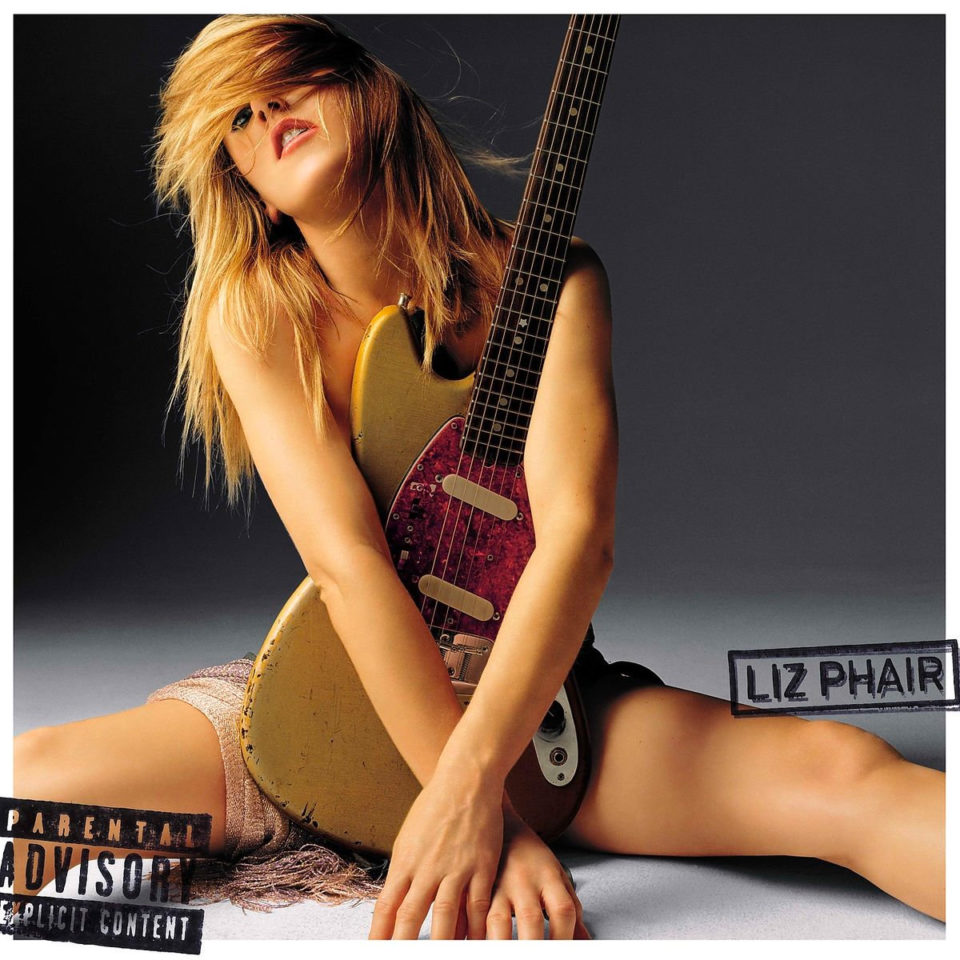By Tom Williams
Paste Magazine, June 24, 2023
The idea that music critics would revolt at an indie-rock sensation “going pop” seems laughable in 2023. So many of the most beloved alternative bands at the moment, like Alvvays and Soccer Mommy, shamelessly take inspiration from pop music—specifically the sugar rush hooks and stadium-ready choruses. Listen, for instance, to Soccer Mommy’s “Out Worn” and make note of its equally euphoric and cathartic chorus—how it parallels the infectious melodies of Taylor Swift’s “Fearless” or “Fifteen” will be readily apparent.
Last year’s hottest indie sensation, Wet Leg, spent the year opening for Harry Styles, one of the biggest pop star’s of our time—while critics have greeted recent efforts from megastars like Beyoncé and Swift as warmly as they have albums from any underground artist. Yet when Liz Phair, whose lo-fi 1993 debut Exile In Guyville became an indie landmark, went pop in 2003, critics and fans alike reacted with revulsion—deeming Phair’s fourth LP as one of the worst albums of all time. Most famously, Pitchfork’s Matt LeMay’s gave Liz Phair a rare 0.0 score, deeming it an album “that may as well not even exist.”
LeMay’s review, which he apologized for in 2019, has since become infamous, and has been held up as a wider indication of music criticism’s worst traits in the early-2000’s—an utter disregard of pop music (“Liz Phair’s greatest asset has always been her inability to write a perfect pop song,” opined LeMay) and an inherent skepticism and aversion to female sexuality; especially from women over 30.
But that conclusion pales in comparison to that of other critics—many of whom took any sexist and ageist undertones in the original Pitchfork review and reconfigured them into cruder and more derogatory ideas. Jim Connelly, of Neumu, described the LP as “the aural equivalent of a boob job”—a criticism that you’d never catch being deployed against a man’s music. PopMatters’ Adrien Begrand side-stepped the “older women” euphemism employed by LeMay to describe the 36-year-old Phair, in favor of a more direct jab: “It’s something we’d rather hear an 17-year-old girl sing, instead of a 36-year-old woman.” Even the scant, positive reviewers couldn’t resist grossly objectifying language (“She’s still a messy troublemaker whose brain is as spicy as the rest of her body” was Blender’s uncomfortably worded affirmation of the LP).
But no criticism of Liz Phair has aged more poorly than that leveled at it by the Guardian’s Adam Sweeting. The short-and-not-sweet, two-paragraph review begins with a melodramatic denouncement of Phair’s new pop-stylings that was used in so many negative reviews of the LP (“Phair must have fallen under the influence of a Svengali armed with personality-warping drugs”) and dismissed Phair’s lyrics about sex and lust as “audio pornography”. Sweeting, however, saves his most damning criticism for last—commenting on the album sleeve that depicts an undressed Phair covered up only by her electric guitar. He opined “She pouts and poses like a superannuated Lolita. Not a pretty sight. Or sound.” It is one of countless criticisms of the album that says far more about the person writing the review than it does about the music being written about.
Listening to Liz Phair anew in 2023, you’re primarily struck by confusion at the idea that anyone could have reacted so viscerally to the music provided. Co-produced by The Matrix, it’s a polished, Top-40-ready pop album that has aged no better or worse than Avril Lavigne’s Let Go or Michelle Branch’s The Spirit Room. That is, of course, to say that Liz Phair is very much a product of its time—with production choices that haven’t uniformly stood the test of time, but the infectious hooks and nostalgic charm are enough to make the album worth revisiting 20 years later.
Production duties for Liz Phair were split between The Matrix, Michael Penn, R. Walt Vincent and Phair, herself. At the time of release, much of the blame for Liz Phair’s sound and lyrics was given to The Matrix, who were just one year removed from their 2002 breakthrough with Lavigne’s Let Go. While their footprint is evident in the blown-out, crunchy sound of “Extraordinary” and the peppy, rom-com-ready “Why Can’t I?”, the four songs they produced for the album (“Extraordinary”, “Why Can’t I?”, “Rock Me” and “Favorite”) are not startling departures from the three Phair-produced tracks (“Firewalker”, “Love/Hate” and “My Bionic Eyes”). Retrospectively, it seems as though The Matrix did not steer Liz Phair’s sound in the way they were accused of, but merely complied with Phair’s pre-existing, independent vision for the LP’s sound.
Phair has writing credits on all of Liz Phair’s 14 tracks—most of them solo—and, despite claims that her collaborators had betrayed her distinctive voice, the storytelling talent that made Exile In Guyville so beloved remained evident a decade later. Nowhere is this more obvious than on “Little Digger,” a mid-album meditation on dating as a single mother. The narrative alternates between the mother’s perspective and that of her son.
On the song, Phair moves between crushing confessions (“The damage is done / I pray to God / That I’m the damaged one”) and evocative verses sung from her son to his prospective, potential step-fathers (“You put your trucks up / On the bed next to him / So he can get a better look at them / You say, ‘This one’s my favorite one / This one you can’t have / I got it from my dad’”). Like the rest of Liz Phair, “Little Digger” may sound distinctively different from anything Phair had released to that point, but there’s no doubting that this is the same Phair who wrote “Divorce Song” and “Fuck and Run”; the same Phair who deconstructed sex and relationships with clinical precision and a keen eye set agaze towards affecting intimacies.
It’s impossible to talk about Liz Phair—or at least the critical response to Liz Phair—without talking about the album’s 11th track, “H.W.C.,” the title of which is an acronym for “hot white cum.” Critics responded particularly poorly to the song and its 16 repetitions of “gimme your hot white cum.” “Vain and degrading” was LeMay’s motion, while the song was undoubtedly central to Sweeting’s condemnation of the LP as “audio pornography.” Many critics negatively compared the song to “Flower”—the Exile In Guyville fan-favorite where Phair promised to “fuck you ‘til your dick is blue.” The argument was that, while the lo-fi “Flower” was thrillingly incendiary, “H.W.C.” was a transparent and cynical attempt at provoking controversy.
But critics missed what made “H.W.C.” subversive in its own distinct way: Phair’s use of such graphic imagery on a mainstream pop album offered an expansive blueprint for the genre’s future, as well as a stark rebellion against the music’s then-reliance on conjuring innuendo in order to channel female sexuality (Think Kelis’ “Milkshake,” which became a worldwide hit the same year that “H.W.C.” was released).
“H.W.C.” was also clearly intended as an act of parody—at least partially. The sing-songy approach that Phair takes when delivering lines like “You’re the best magazine advice” and “It’s the fountain of youth / It’s the meaning of life” are clearly a shot at women-dominated industries—specifically the ways they flatten and reduce the realities of aging and sexuality, often in ways that reinforce existing, sexist stereotypes and gender roles.
Despite LeMay’s professions of Phair’s inability to write a “perfect pop song,” Liz Phair does actually contain one (alongside, a number of very good ones). “My Bionic Eyes,” composed and produced solely by Phair, is easily one of the 2000’s greatest hits that never was. A triumphant pop-rock number, led by incisive drumming and electrifying guitar riffs, it continually builds in intensity until exploding into a triumphant final chorus, where Phair declares: “As I got older, I had to step out of the lines / And make up my own mind.” It reads as both a victory lap and a rebuke to anyone who thinks this album represents a compromise by Phair.
Looking back, the response Liz Phair received isn’t just indicative of a music criticism industry riddled with misogyny and ageism, it’s also indicative of an industry painfully lacking self-awareness. Inherent in so many of the criticisms of Phair’s new sound was the belief that she never should have abandoned her old one. Not only was this laughably hypocritical—given that multiple critics had panned her previous, true-to-form LP Whitechocolatespaceegg for resulting in diminishing returns—but it demonstrated a disconnect with the ways in which the music industry had changed in the decade following Exile In Guyville (a phenomenon also seen in the outsized backlash to Jewel’s foray into pop 0304, released that same year).
The world in which Phair wrote the Girlysound tapes—which would form the basis of Exile In Guyville—was one where the likes of PJ Harvey and Hole were ascendent, and the Riot Grrrl scene was still going strong. The world in which her following 90s LPs—Whip-Smart and Whitechocolatespaceegg—were released saw Alanis Morissette and, briefly, Fiona Apple dominate the charts. But, by the end of the 90s, Phair’s sales had dipped—a reflection of changing commercial tides more than any supposed decline in songwriting. Maybe Liz Phair was designed as a cash grab, given Phair’s then-status as a single mother 10 years removed from her most successful album.Such motivations would be more than understandable. But, the album was also just an acceptance of reality—a reality where Lavigne’s “Complicated” and Nickelback’s “Someday” were about the closest thing to alt-rock that most radio stations were willing to play. You may or may not think that Phair was a sell-out, but, first and foremost, she was a realist.
I would like to imagine that the blatant age-based shaming that Phair suffered in 2003 would no longer be tolerated by most editors, but it still seems as though we have license to indiscriminately disregard the stories of women over 35. There are reference points everywhere—Alanis Morissette, Garbage and Phair, herself, all of whom have released some of the best work of their careers in the last two years—but many critics have plainly ignored those benchmarks. I can’t stop returning to the unabashed ageism and misogyny that Liz Phair was met with 20 years ago shows. It is an immediate and necessary illustration of how much work music critics have left to do to make things right and not perpetuate or prolong a sexist, outdated cycle.
And, in today’s genre-fluid streaming age, Phair’s sonic switch-up in 2003 seems far less important than her songwriting talent, which largely endured her change of pace. It’s something LeMay acknowledged in his 2019 apology for his original Pitchfork review—an incisive and compellingly self-reflective essay that’s worth reading. “The idea that ‘indie rock’ and ‘radio pop’ are both cultural constructs? Languages to play with? Masks for an artist to try on? Yeah. I certainly did not get that. [Liz Phair] did get that—way before many of us did,” admitted the critic.
It’s refreshing and reassuring to know that music critics eventually adapted to the modern music landscape post-Liz Phair. And the industry adapted, too, especially when a wave of poptimism washed over it at some point in the late-2000s and turned the likes of Carly Rae Jepsen and Robyn into critical darlings. Ideas of “indie=good” and “mainstream=bad,” have (thankfully) largely fallen out of fashion—meaning that albums by Beyoncé and Taylor Swift sat on many of 2022’s year-end lists alongside releases by Black Country, New Road and Soccer Mommy. We have Liz Phair to thank for that, and the respect and adoration has long been overdue.








